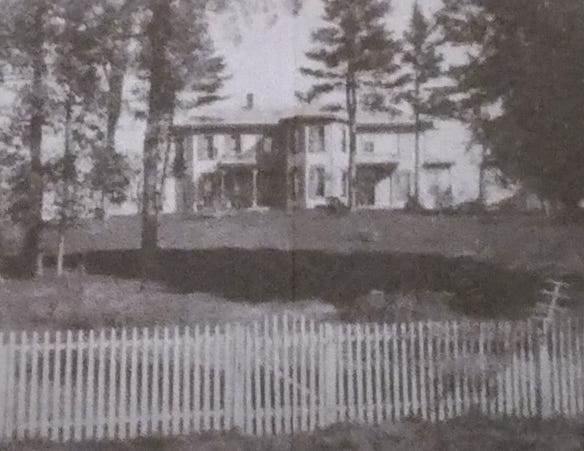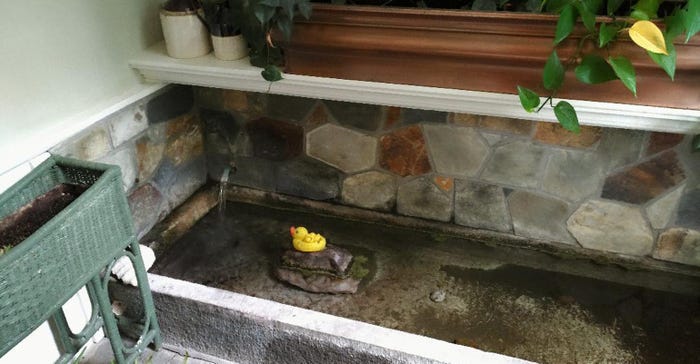October 25, 2018

The smell of autumn was in the crisp, clean air as Friends of Ohio Barns met at Lost Creek Reserve and Knoop Agricultural Heritage Center, the first stop on the annual 2018 fall tour. This beautifully kept homestead in southwestern Ohio is a must-see for the barn lover and history buff. It was a great start to a wonderful day of barns, history, fun and friendship.
Tama Cassidy, public education coordinator for Miami County Parks, was our guide for this step back in time. She told the story of the John E. and Barbara Knoop family, of the homestead they established, and the role the five generations of Knoops played in the founding and growth of Troy, Ohio, and the surrounding area.

HISTORIC HOME: This historic photo shows the Victorian house along Lost Creek. It was built in 1883 and still stands today.

Log house first building
The story began in the year 1800, when the Knoops built a two-story log house overlooking Lost Creek. It was surrounded by lush vegetation and had a natural supply of fresh water provided by a nearby spring. After clearing and cultivating the soil, they built a small, one-story brick house in 1815. In 1832, they raised the large, timber-frame bank barn that also overlooks the banks of Lost Creek.
The timber-frame barn is built in the Sweitzer style; because of the early construction date, it was thought it might have been built with the scribe rule method. However, it was not. The newer square-rule method of construction was used. In the peak of the roof is a wooden hay track, complete with hay car and grappling hooks, to move long, loose hay from wagon to mow. The barn sits on a beautiful stone foundation. Fenestrations of Gothic louvers grace the walls of the barn. It was built to make a statement as well as for function.
The stately bank barn was protection for the family livestock from the many predatory animals in the surrounding woods. It also stored and protected the grasses and grains for the oxen, cows and other small animals necessary for survival in the wilderness. It was some years later when horses were added for fieldwork and everyday transportation.

KEEPING IT COLD: This 1800s indoor refrigeration system uses a spring water-fed trough in the dining room to keep food cold.

Blacksmith shop key to homestead
Of the other small outbuildings on the homestead, one of the most important was the blacksmith shop. The smithy fabricated everything from farm implements and hand tools to utensils for the house and kitchen. It was also the blacksmith’s job to keep things repaired and ready for use. Other buildings included a small hay barn, a corncrib and a buggy shed. Some of these smaller buildings are topped with original weather vanes.
In 1883, a new Victorian house was built to grace the serene grounds of the homestead, and the brick house was abandoned and dismantled. The stately Victorian mansion still stands today and can also be toured. The most unique feature is an indoor, live-fed, open-water trough. Crocks of milk, cream and butter along with other foodstuffs were set in the cold spring water running through the trough. The house is furnished with period pieces, and the woodwork in all the rooms is beautiful.
This is one of the most original, complete and historically documented homesteads I have seen. It is near Troy, Ohio, at 2385 E. State Route 41, and it is the largest park in the Miami County Park system, with 457 acres. It offers trails for hiking, cross-country skiing and spotting wildlife in the surrounding fields and woods. For more information visit, miamicountyparks.com.
I’m still searching for and identifying the oldest, historically significant and/or most unique barns in each of the 88 counties in Ohio. My list is growing with each contact I receive from you, the readers. If you know of any barns with these qualifiers, especially if they are in danger of being lost, please contact Pam Gray at [email protected] or call 740-263-1369.
About the Author(s)
You May Also Like




